Fri, 17 Oct 2014 . Last updated Fri, 08 May 2015 20:44
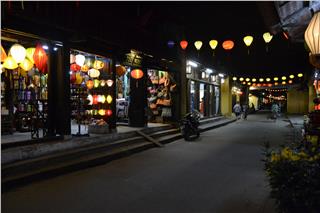
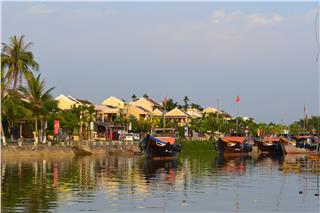
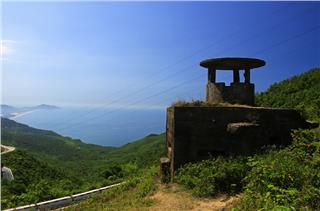
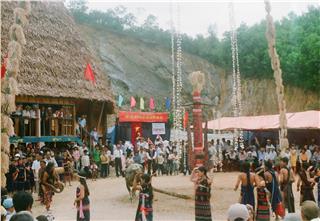
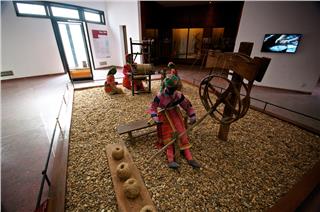
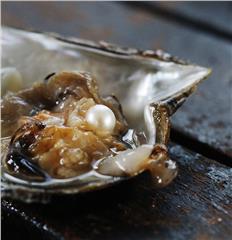
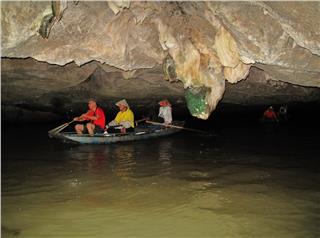
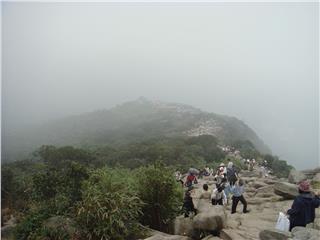
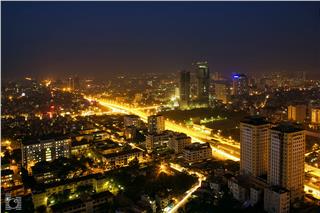
You can reach Lai Chau, a province located 450 kilometers from Hanoi in the Northwest, in different ways. You can take the train from Hanoi to Lao Cai city. Then, take Highway 4D, then by passing Sapa to reach Lai Chau. However, we took another route by following Highway 32, by-passing Phu Tho Province to get to Nghia Lo, Mu Cang Chai in Yen Bai, crossing Khe Pass, Tan Uyen, Than Uyen and Tam Duong districts before arriving in Lai Chau city.
Lai Chau is a province in the Northwestern mountainous region where the Da River flows into Vietnam. This is home to more than 20 ethnic groups with their own special culture. The province has majestic landscape and villages with unspoiled beauty. Coming here, you can find traces of the struggle for national construction and defense of the people of 20 ethnic groups in the border province.
Lai Chau is a plateau, 1500 meters above sea level, where it is shrouded in clouds and fog. The weather is cool and fresh all year round. Lai Chau town became Lai Chau city in April this year and is currently, the youngest provincial city. Lai Chau city has the average height of 1000 meters, making it the highest urban area in the North and the second highest one in Vietnam, after Dalat city, Lam Dong.
Infrastructure of the city is synchronously invested with wide roads, newly-built administration center and square and a large lake right in the center of the city. Lai Chau is located in a spacious valley, surrounded by mountains and hills lying closely to each other. If you want to have a panorama of the city, you can climb up to the TV station or to where Le Loi Temple is situated. And my first destination in Lai Chau is Le Loi Temple.
The temple is located on the top of a hill, in the North of the province center. People on Nam Long commune used to worship the God and pray for favorable weather on this hill. The temple was built in 1432 in memory of Le Loi, a national hero who led his troops here to smash the Deo Cat Han rebels in Lai Chau. After the victory, Le Loi visited the border area. Amazed by its beauty, he wrote a poem in Sino-Vietnamese characters with 132 letters and had it carved on a stone stele in Pu Hoi Cho cave. His poem told mandarins and ordinary people to stay loyal to the country and live in peace. You can even see hills covered by tea plants in nearby areas when standing here. Tea brush has been grown in Lai Chau in big quantity. The city now has new varieties of tea with better quality. Tea crop is the main source of income to many locals in this plateau. We admire the sunset and enjoy the fresh air when the night falls.
We’re recommended to visit Pu Sam Cap system of caves on the second day of our visit to Lai Chau. The area is 6 kilometers away from the center of Lai Chau city to the West. The system has three main caves named Thien Mon, Thien Duong and Thuy Tinh which are believed to be as beautiful as Phong Nha (Quang Binh), Thien Cung (Quang Ninh) and Huong Tich (Hanoi). Thien Mon cave is right next to the provincial road leading to Sin Ho district but to our surprise, it’s really quiet. The entrance of the cave is home to many species of plants. They are ever green thanks to the high humidity here. The cave is like a natural air-conditioner. Discovered in 2006, Pu Sam Cap cave system always attracts a large number of tourists from Lai Chau and other localities.
The name Pu Sam Cap may sound strange to you. It means three-mountain range in Thai language. This name is associated with a legend of Thai ethnic people in Northwest and Lai Chau in particular. Legend has it has the Jade Emperor ordered Xai Hia to reclaim land on Earth. The giant deity brought an ox with 9000 humps and a buffalo with 9000 shoulders. He got up in Muong Thanh to get rice seedings in the morning, planted them in Muong Than, Muong Tac and Muong Lo at noon and cooked dinner here with the three mountains being his stove. Those three mountains are today’s Pu Sam Cap.
Thien Mon has a large entrance. Entering the cave, you can feel the amazing cold of the stone. Innumerable stalagmites with different shapes and sizes can be found all around. These stalagmites are imagined as the Lingas making tourists think about fertility with Yin and Yang of a spiritual life. The center of Thien Mon cave has high and wide ceiling. It’s the part with less light and home to numerous bats. New interesting things come to our eyes one by one. Together they create an amazing picture of nature. The beauty of Thien Mon cave is sure to make you amazed. But wait for some time and you will even find more interesting things in Thien Duong cave.
Thien Duong cave used to be called Thi Lai, the name of a beautiful local girl with a nice love story. This is the second cave named Thien Duong. It’s also called Thi lai, the name of a young girl. Life was so hard for girls in the feudal time. Thi Lai was a beautiful mountainous girl. Legend has it that her eyes were as beautiful as those of a deer. Her hair was smooth like the flow of Binh Lu stream. So many young men fell in love with the beauty.
Thien Duong cave is like a gorgeous landscape painting with natural lines. We walk along the cliff to reach the cave through great tranquility. Watching the scenes inside the cave, we can think of different images with our own imagination while looking at those stalactites. They are sparkling just like the Milky Way with millions of twinkling stars. The masterpieces of nature have been formed with drops of water like this for millions of years. When going further into the cave, we can explore a colorful space. The stalactites hanging from the cave ceiling create images we often see in our life. And out there the terraced rice fields were also created by nature. Columns of white stalagmites around the lake look like giant quill pens. Coming here, tourists can think of a range of images with their imagination. The nature is just amazing.
Lai Chau is also known for the vibrant culture of 20 ethnic groups living here. You reach Hon village if you travel the distance of about 10km to the East. This is home to the Lu people with a special culture. The Lu people are one of the 54 ethnic groups of Vietnam. According to recent statistics, there are only nearly 4000 Lu people in Vietnam and most of them live in mountainous communes of Tam Duong, Tan Uyen and Sin Ho district, Lai Chau. The Lu people earn their living by planting mulberries and weaving cloth. Lu women have excellent adroitness to make clothes for their family members. In particular, dresses, blouses and scarves of a bride always have elaborate patterns with nice indigo dye. The villages of the Lu people have been almost unchanged over time. In recent years, some of them have been opened to serve ecotourism.
Vang Pheo hamlet (Muong So commune, Phong Tho district) is where the typical culture of the Thai people is preserved today. It’s 30km away from Lai Chau city in the North. You can take Highway 12 to get to Vang Pheo. Vang Pheo village is at the foot of Phu Nho Kho Mountain where two streams Nam Kho and Nam Lun flow together. In front of the village is a vast rice field. Vang Pheo is said have pure beauty of a flower. It’s often likened to a pearl in the Northwestern mountainous region.
The village has about 400 people. They belong to Thai Trang (White Thai) ethnic group and live in traditional stilted houses. The Thai Trang ethnic people here can still preserve many festivals and traditional customs. Each festival is a picture depicting the community of the Thai Trang ethnic people in Muong So. For example, Nang Han festival, Then Kin Pang festival. A festival has a range a traditional rituals, activities and games deeply imbued with the local culture like fan dance, “xoe” dance, “to ma le” (hitting a kind of nut), “nem con” (throwing a fabric ball through a ring placed on top of a pole), “day gay” (sticking pushing), fish catching and so on.
Sin Ho, the second Sapa in the Northwest, is a must-see place in Lai Chau. Located about 60km from Lai Chau city, the mountainous district of Sin Ho can be reached via Road 4D. You will pass many forests, see lots of valley and streams along the way and drive on the snaking paths on the cloud-shrouded mountains. You will also find yourself in the sea of clouds. People of different ethnic groups live in Sin Ho. Sin Ho market day where you can see people in different costumes are the best evidence for this. You will have a chance to bath with medicinal leaves, a service provided by the Dao ethnic people to feel reenergized and taste specialties of the Thai ethnic people’s cuisine. Having arrived in Sin Ho, you will never find it regrettable.
It’s hard to explore all the beauty of Lai Chau in only one visit. Each time you come here, you can see the scenery in different seasons and attend different festivals. So, we will surely come back to this province time and again. Novelties are lying ahead to welcome us and the locals always reserve their sentiments to us and they regard as their near and dear ones. That is why Lai Chau is home away from home.
Source: VTC10 - NETVIET

 Đặt vé máy bay cho người Việt?
Bấm vào đây
Đặt vé máy bay cho người Việt?
Bấm vào đây
Our service uses cookies for technical, analytical and marketing purposes. See our Cookie và Privacy policies for more information. If you agree to this, just keep browsing.


